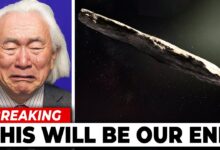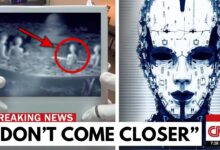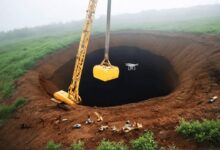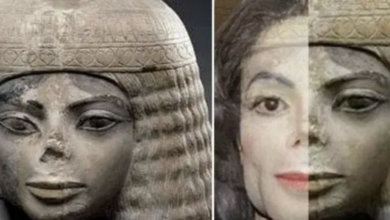James Webb Telescope JUST DETECTED THE UNIMAGINABLE
A Window Into Time That Shouldn’t Exist
Imagine standing before a mirror—not one that reflects your face, but one that reflects time itself. Instead of your own eyes, you’re staring into the universe’s first moments, when existence was still stretching into shape after its very first breath.
That is the mission of the James Webb Space Telescope (JWST): to peer deeper into the cosmos than ever before, back toward the supposed “infancy” of everything. But when Webb looked, it didn’t see the universe as a newborn.
It saw something impossible.
What it found didn’t just surprise scientists—it shattered the foundations of modern cosmology.
The Universe We Thought We Knew
For decades, the cosmic timeline seemed secure:
-
The Big Bang – A burst of energy and matter.
-
The Cosmic Dark Age – A lightless period before stars.
-
Gradual Formation – First stars ignite, galaxies slowly emerge, complexity increases over billions of years.
The further back in time we look, the simpler things should be: faint hydrogen clouds, scattered matter, and no complex structures.
But Webb pointed its golden mirrors at a patch of sky thought to be empty—a stretch of near-total darkness. And in that “emptiness,” it found something that simply should not have been there: a fully developed galaxy, complete with spiral arms and a supermassive black hole.
Galaxies That Shouldn’t Exist Yet
This wasn’t a fuzzy blob or a faint smear of gas. It was structured, mature, and vibrant—something scientists would expect billions of years after the Big Bang, not within its first 400 million years.
And then the data kept coming. Webb saw more of these “impossible” galaxies: chemically rich, gravitationally stable, and already rotating in elegant formations.
The standard model of galaxy formation says this can’t happen so quickly. The process should take eons:
-
Gas and dust slowly gather into stars.
-
Stars form clusters.
-
Clusters merge into galaxies.
But Webb’s images looked like the timeline had been skipped entirely.
The Chemical Mystery
Spectral analysis revealed another shock: these galaxies contained oxygen, carbon, and iron—elements forged inside massive stars and released by their explosive deaths.
That means:
-
First stars formed.
-
They burned and died.
-
Their elements enriched space.
-
New stars formed with those heavy elements.
This entire cycle—normally requiring hundreds of millions to billions of years—appeared to have happened twice within the first few hundred million years of the universe.
The early cosmos wasn’t waking slowly. It was racing, burning, collapsing, and creating in a frenzy we’ve never imagined.
The Black Hole That Shouldn’t Be
Then came the most absurd discovery: deep inside one of these galaxies lurked a supermassive black hole over a billion times the mass of the Sun.
Black holes grow over billions of years, feeding slowly on gas and stars. Even the fastest possible models can’t explain such a monster so early.
It would be like finding a fully grown adult who was born an hour ago.
Theories on the Edge of Science
With reality seemingly broken, scientists began exploring radical possibilities:
-
Primordial Black Holes – Formed directly from extreme density fluctuations in the first moments of the universe.
-
Exotic Dark Matter Effects – Dark matter not just shaping gravity, but actively accelerating galaxy growth.
-
Time Flowing Differently – Early cosmic time stretched or compressed in ways we can’t yet detect.
-
Complexity as a Starting Point – Maybe the universe didn’t evolve into complexity. Maybe it began complex.
Patterns in the Chaos
Using AI to map Webb’s findings, researchers noticed the galaxies weren’t randomly scattered. They formed mathematical ratios—patterns resembling the golden spiral—across billions of light-years.
It wasn’t just beauty. It was structure. A fractal-like order hidden in the fabric of the cosmos, as if written into its code from the start.
The Organic Puzzle
In an ancient “empty” void, Webb’s instruments detected complex organic molecules—polycyclic aromatic hydrocarbons, the building blocks of amino acids.
They weren’t tied to planets or stars; they floated freely in space for over 13 billion years.
This suggested life’s ingredients weren’t a late cosmic accident—they were baked into the universe from the beginning.
The Flower in the Sky
One image froze astronomers: six galaxies arranged perfectly around a central object, equally spaced, rotating together like petals around a flower’s center.
No natural gravitational model could recreate the symmetry. Some whispered about the possibility of intentionality—a message or marker placed to be discovered only when technology like Webb existed.
The Observer Effect—on a Cosmic Scale
And then, the most unsettling idea: what if looking changes the universe?
Quantum mechanics tells us that observation affects particles. But some fringe physicists now wonder—does this scale up? Are our observations with Webb subtly rewriting the cosmos, even in its ancient past?
Some Webb data even appears to shift depending on when and how it’s processed.
What Webb Truly Found
The James Webb Space Telescope hasn’t just shown us stars, galaxies, or black holes. It has hinted at a universe that may:
-
Have matured far faster than physics allows.
-
Be patterned in ways that suggest deeper laws—or design.
-
Contain life’s raw ingredients from the very start.
-
Be aware, in some way, of our attention.
Maybe Webb didn’t just look at the universe. Maybe something in the universe looked back.




